Matteo Fontana
Multi-Output Conformal Regression: A Unified Comparative Study with New Conformity Scores
Jan 17, 2025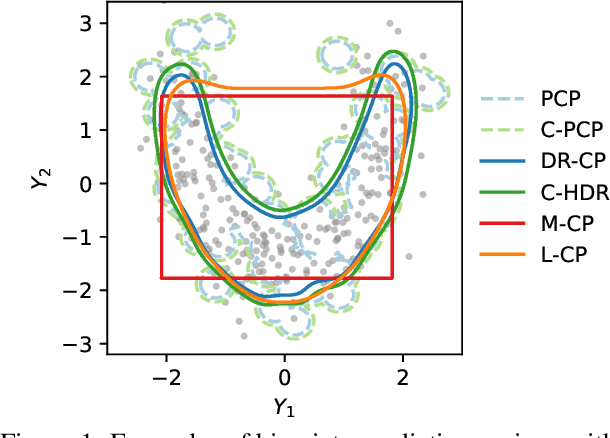

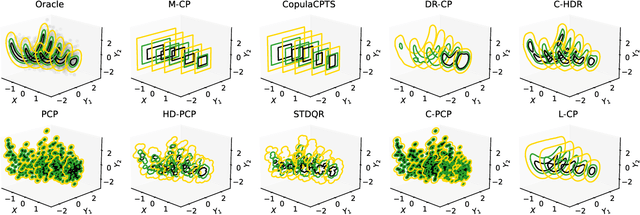
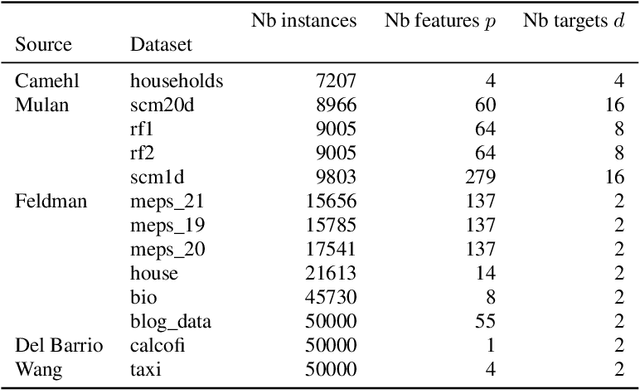
Abstract:Quantifying uncertainty in multivariate regression is essential in many real-world applications, yet existing methods for constructing prediction regions often face limitations such as the inability to capture complex dependencies, lack of coverage guarantees, or high computational cost. Conformal prediction provides a robust framework for producing distribution-free prediction regions with finite-sample coverage guarantees. In this work, we present a unified comparative study of multi-output conformal methods, exploring their properties and interconnections. Based on our findings, we introduce two classes of conformity scores that achieve asymptotic conditional coverage: one is compatible with any generative model, and the other offers low computational cost by leveraging invertible generative models. Finally, we conduct a comprehensive empirical study across 32 tabular datasets to compare all the multi-output conformal methods considered in this work. All methods are implemented within a unified code base to ensure a fair and consistent comparison.
JANET: Joint Adaptive predictioN-region Estimation for Time-series
Jul 08, 2024Abstract:Conformal prediction provides machine learning models with prediction sets that offer theoretical guarantees, but the underlying assumption of exchangeability limits its applicability to time series data. Furthermore, existing approaches struggle to handle multi-step ahead prediction tasks, where uncertainty estimates across multiple future time points are crucial. We propose JANET (Joint Adaptive predictioN-region Estimation for Time-series), a novel framework for constructing conformal prediction regions that are valid for both univariate and multivariate time series. JANET generalises the inductive conformal framework and efficiently produces joint prediction regions with controlled K-familywise error rates, enabling flexible adaptation to specific application needs. Our empirical evaluation demonstrates JANET's superior performance in multi-step prediction tasks across diverse time series datasets, highlighting its potential for reliable and interpretable uncertainty quantification in sequential data.
Towards Safer Robot-Assisted Surgery: A Markerless Augmented Reality Framework
Sep 14, 2023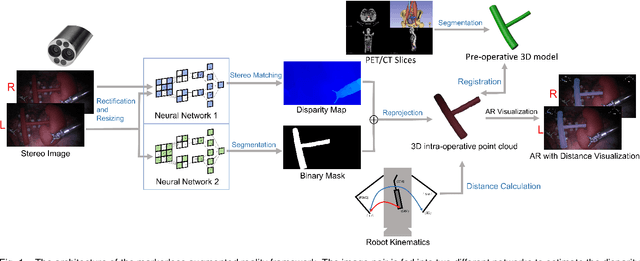
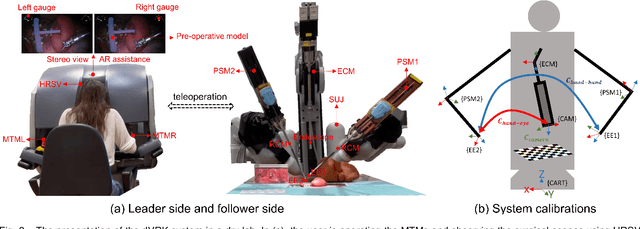


Abstract:Robot-assisted surgery is rapidly developing in the medical field, and the integration of augmented reality shows the potential of improving the surgeons' operation performance by providing more visual information. In this paper, we proposed a markerless augmented reality framework to enhance safety by avoiding intra-operative bleeding which is a high risk caused by the collision between the surgical instruments and the blood vessel. Advanced stereo reconstruction and segmentation networks are compared to find out the best combination to reconstruct the intra-operative blood vessel in the 3D space for the registration of the pre-operative model, and the minimum distance detection between the instruments and the blood vessel is implemented. A robot-assisted lymphadenectomy is simulated on the da Vinci Research Kit in a dry lab, and ten human subjects performed this operation to explore the usability of the proposed framework. The result shows that the augmented reality framework can help the users to avoid the dangerous collision between the instruments and the blood vessel while not introducing an extra load. It provides a flexible framework that integrates augmented reality into the medical robot platform to enhance safety during the operation.
Semi-supervised GAN for Bladder Tissue Classification in Multi-Domain Endoscopic Images
Dec 21, 2022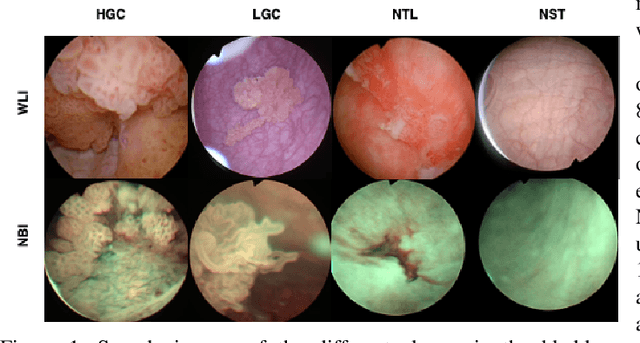
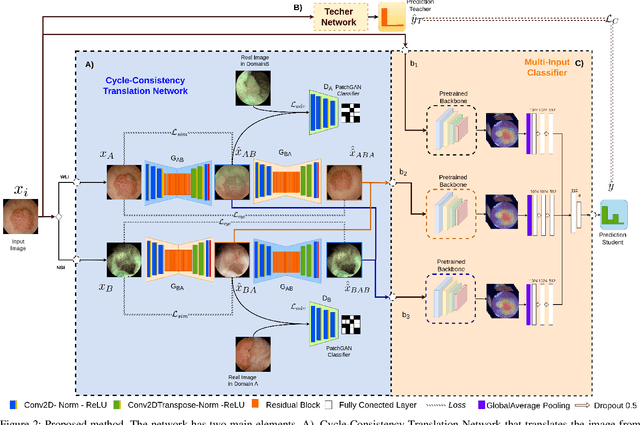
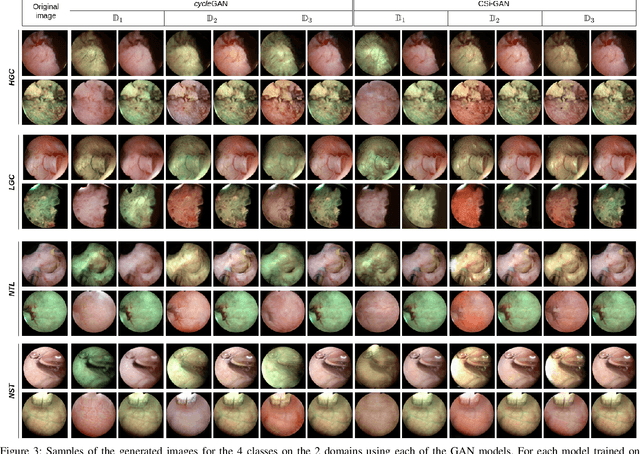
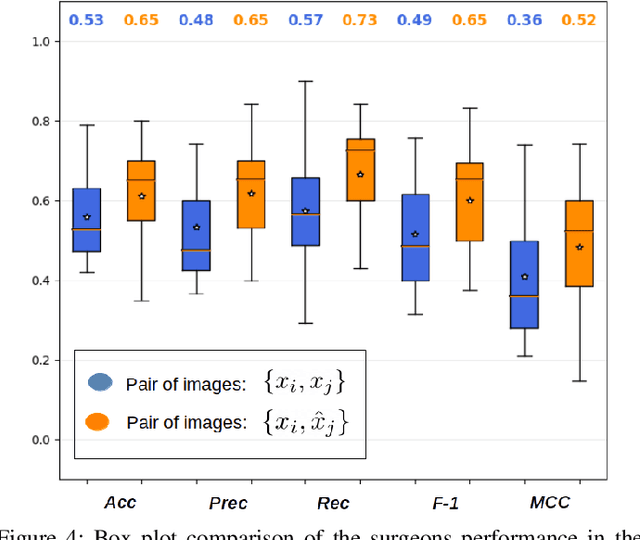
Abstract:Objective: Accurate visual classification of bladder tissue during Trans-Urethral Resection of Bladder Tumor (TURBT) procedures is essential to improve early cancer diagnosis and treatment. During TURBT interventions, White Light Imaging (WLI) and Narrow Band Imaging (NBI) techniques are used for lesion detection. Each imaging technique provides diverse visual information that allows clinicians to identify and classify cancerous lesions. Computer vision methods that use both imaging techniques could improve endoscopic diagnosis. We address the challenge of tissue classification when annotations are available only in one domain, in our case WLI, and the endoscopic images correspond to an unpaired dataset, i.e. there is no exact equivalent for every image in both NBI and WLI domains. Method: We propose a semi-surprised Generative Adversarial Network (GAN)-based method composed of three main components: a teacher network trained on the labeled WLI data; a cycle-consistency GAN to perform unpaired image-to-image translation, and a multi-input student network. To ensure the quality of the synthetic images generated by the proposed GAN we perform a detailed quantitative, and qualitative analysis with the help of specialists. Conclusion: The overall average classification accuracy, precision, and recall obtained with the proposed method for tissue classification are 0.90, 0.88, and 0.89 respectively, while the same metrics obtained in the unlabeled domain (NBI) are 0.92, 0.64, and 0.94 respectively. The quality of the generated images is reliable enough to deceive specialists. Significance: This study shows the potential of using semi-supervised GAN-based classification to improve bladder tissue classification when annotations are limited in multi-domain data.
Conformal Prediction Bands for Two-Dimensional Functional Time Series
Jul 27, 2022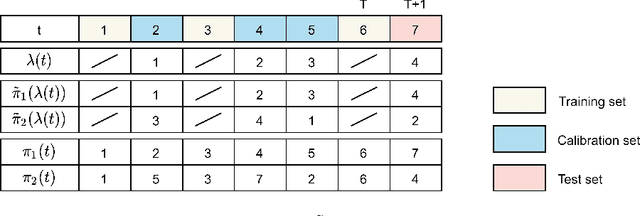
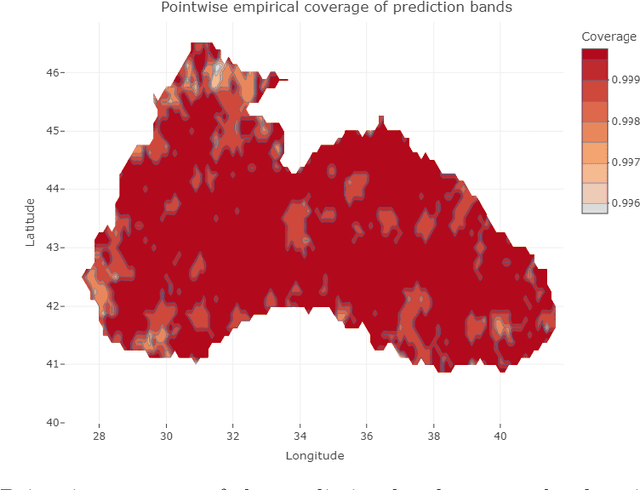
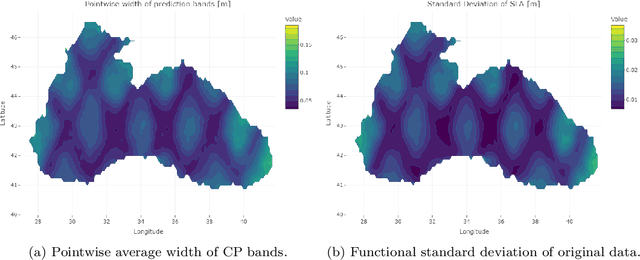
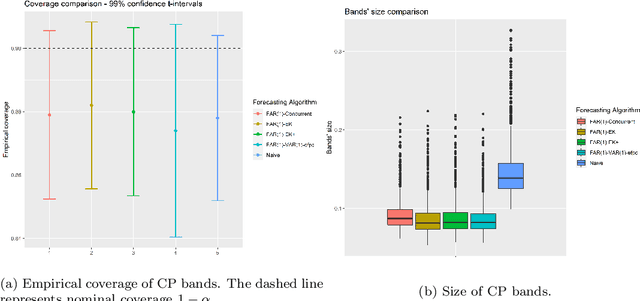
Abstract:Conformal Prediction (CP) is a versatile nonparametric framework used to quantify uncertainty in prediction problems. In this work, we provide an extension of such method to the case of time series of functions defined on a bivariate domain, by proposing for the first time a distribution-free technique which can be applied to time-evolving surfaces. In order to obtain meaningful and efficient prediction regions, CP must be coupled with an accurate forecasting algorithm, for this reason, we extend the theory of autoregressive processes in Hilbert space in order to allow for functions with a bivariate domain. Given the novelty of the subject, we present estimation techniques for the Functional Autoregressive model (FAR). A simulation study is implemented, in order to investigate how different point predictors affect the resulting prediction bands. Finally, we explore benefits and limits of the proposed approach on a real dataset, collecting daily observations of Sea Level Anomalies of the Black Sea in the last twenty years.
Conformal Prediction: a Unified Review of Theory and New Challenges
May 16, 2020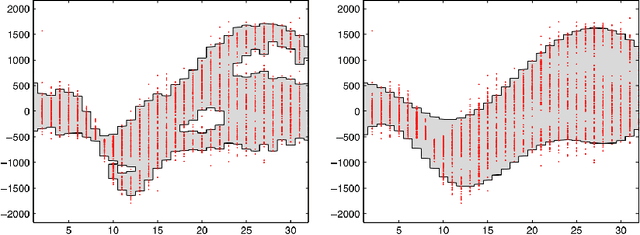


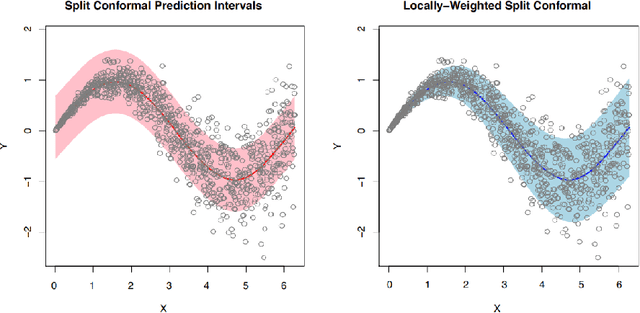
Abstract:In this work we provide a review of basic ideas and novel developments about Conformal Prediction -- an innovative distribution-free, non-parametric forecasting method, based on minimal assumptions -- that is able to yield in a very straightforward way predictions sets that are valid in a statistical sense also in in the finite sample case. The in-depth discussion provided in the paper covers the theoretical underpinnings of Conformal Prediction, and then proceeds to list the more advanced developments and adaptations of the original idea.
Multi-level conformal clustering: A distribution-free technique for clustering and anomaly detection
Oct 21, 2019
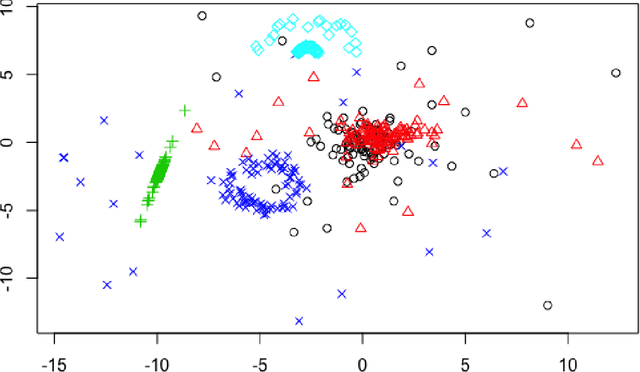

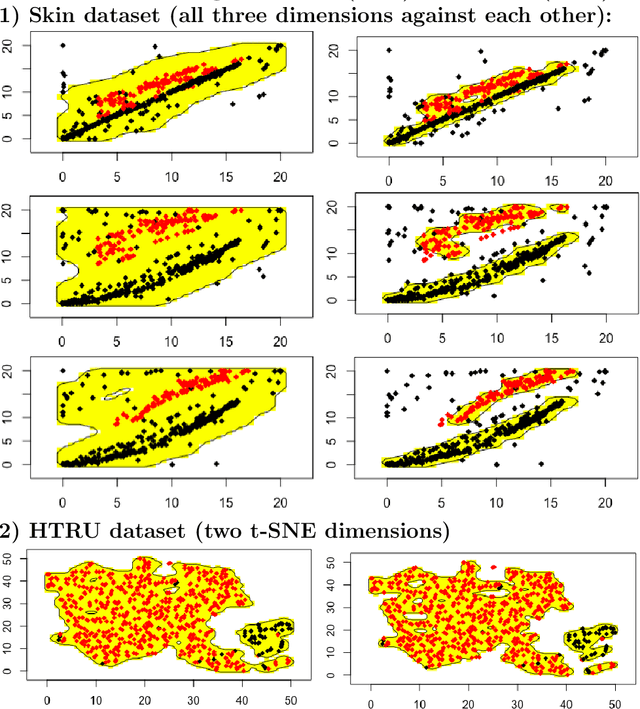
Abstract:In this work we present a clustering technique called \textit{multi-level conformal clustering (MLCC)}. The technique is hierarchical in nature because it can be performed at multiple significance levels which yields greater insight into the data than performing it at just one level. We describe the theoretical underpinnings of MLCC, compare and contrast it with the hierarchical clustering algorithm, and then apply it to real world datasets to assess its performance. There are several advantages to using MLCC over more classical clustering techniques: Once a significance level has been set, MLCC is able to automatically select the number of clusters. Furthermore, thanks to the conformal prediction framework the resulting clustering model has a clear statistical meaning without any assumptions about the distribution of the data. This statistical robustness also allows us to perform clustering and anomaly detection simultaneously. Moreover, due to the flexibility of the conformal prediction framework, our algorithm can be used on top of many other machine learning algorithms.
 Add to Chrome
Add to Chrome Add to Firefox
Add to Firefox Add to Edge
Add to Edge